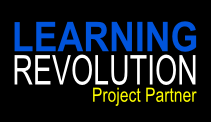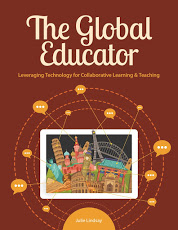Presenter: Kelly Hines
Location: Cherokee, NC USA
Link to presenter’s K12Online Ning Profile page
Presentation Title: Creating and Implementing a STEM Mini-Unit
Presentation Description: Learn tips and tricks for creating and implementing a STEM mini-unit in the K-12 classroom.
DotSub Video Presentation Link
Blip m4v direct link (video file)
Blip mp3 direct link (audio file)
Link to presentation’s supporting documents:
https://sites.google.com/site/khinespd/home/stem—k12online
Additional Information:
My blog: http://keepingkidsfirst.wordpress.com
Find me on Twitter:
http://www.twitter.com/kellyhines








Wow…this is amazing. I think that you are on to something great.
I don’t know how I would use this for art. I have thinking to do. I have the study skills students take the test online and find what type of learner they are for that class. I think that it would be great to do something with art with multiple intelligences. I did do a lesson on artists and the students choose how to present their artist with the different choices like come up with a play, music piece, project etc. but not on this magnitude.
This video revealed to me how a science project about geology (in this case, soil), can be related to a Social Studies unit on land formations (taught in Social Studies, but defintely related to Science). If a Science teacher were to create a STEM unit/project with students about soil in Science class, I could relate it to Social Studies with for my students.
This lesson was very well thought out and seems like the teacher put in a lot of time thinking about the variety of learners. I have never heard of STEM before but think it’s a great reminder of all the different types of learners! I like the quote that she said at the end of the video, “keep lessons short, sweet, and to the point with a heavy emphasis on curriculum.” This is particularly important in the younger grades!
While watching the ACTs, it made me wonder if every objective needed 8 different activities. Several of them were similar so for time’s sake, would it be possible to combine some of the ACTs into a multi-step project?
I enjoyed watching the video and got some great ideas about how to incorporate all aspects of STEM into my classroom. When covering the multiple intelligences, it might be possible to let students choose the different ACTs based on a pre-determined point value. At times, it was difficult to follow the text on the screen because the images kept expanding off the screen.
What a great project! I liked the way you broke it down so that way it makes it easy for teachers to tweak the project and use it for teaching different concepts. I think this project is so poweful because you are incorporating science, technology, engineering, and mathmatics. I also like how you incorporate the multiple levels of intelligences. This ensures that all students needs are being met through this project.
I think it is great planning a mini unit to help all the different types of learners.
video is a good reminder on integrating different learning styles in a lesson plan. as a preschool teacher the lesson planning steps will be helping in reminding me to keep it simple I tend to get too involved
I liked the fact that she reminded teachers to keep their lessons short, to the point and she used the multiple intelligence to create a lesson.
a great example of how to integrate math, science, etc into one learning objective. Also important to remember to include activities that speak to each of the types of multiple intelligences.